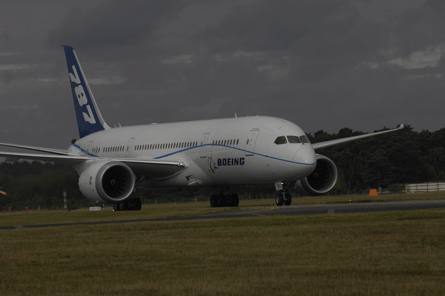Boeing expects orders for the 787 Dreamliner to settle at an even split between the -8 and -9 variants as airlines lean towards the latter, bigger model.
Today, roughly 70% of the existing orders are for the -8, but "ultimately, it will be around a 50-50 split", says Boeing's marketing vice-president Randy Tinseth. With a 280-seat capacity compared with the -8's 240 seats, the -9 will be an aircraft with "absolutely fantastic economics", he argues.
However, he adds that the -8 will be ideal as a replacement for 767s and Airbus A330s, with its longer range allowing airlines to enter new markets.
 |
|---|
© Siva Govindasamy/Flightglobal.com |
Responding to a suggestion that the 787-9 could be a replacement for the 777-200ER, Tinseth acknowledges that the two models are "about 20 seats apart", but insists: "The airlines that already have a large fleet of 777s, if they need a 300-seat airplane, are going to buy a 777. If you have committed to the 787 or have not yet committed, you are probably going to sway on the side of the 787-9."
Boeing expects future demand for its 777 passenger jet to centre on the -300ER variant as airlines seek to replace older high-capacity aircraft. The future market for the 777-200ER will be "relatively small", says Tinseth. However, the airframer expects sales of the 777 freighter to pick up as the cargo market continues to recover.
Sales of the 301-seat 777-200ER are flagging in the face of the similarly sized in-development Airbus A350. Since the A350 XWB programme was unveiled in July 2006, Airbus has won 558 firm orders for the type, including 325 for the 314-seat A350-900. Boeing has netted only 15 orders for the 777-200ER in the same period.
Source: Flight International



















